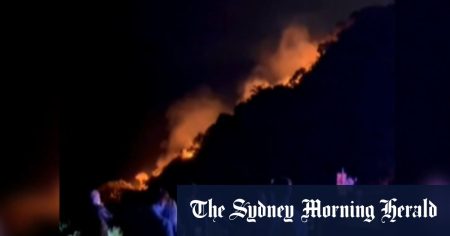Economists are divided on the future direction of the call rate in Australia, with some warning against further increases due to a weak economy and rising unemployment. However, others believe that the Reserve Bank of Australia (RBA) has not done enough to tighten monetary policy, pointing to stable inflation and strong employment figures. The risks to the call rate are seen as slightly skewed to the upside, with higher shipping costs potentially pushing up tradable inflation. However, the improvement in the Australian dollar’s trade-weighted index could offset these upward pressures.
Data to be released before the August interest rate meeting includes retail sales figures, home price growth data, building approvals figures, international goods trade statistics, and the producer price index. Retail sales figures will be closely watched for insights into consumer spending trends, while home price growth data will have implications for inflation. Rising asset prices can encourage more spending, potentially leading to higher inflation. The release of CoreLogic’s July dwelling value index is expected to draw attention from economists and investors.
Economists and analysts from Deloitte Access Economics, State Street Global Advisors, Judo Bank, Coolabah Capital, and the Australian National University have differing opinions on the RBA’s future monetary policy decisions. While some believe that the RBA should refrain from further rate increases given the weak economy, others argue that the RBA has not tightened policy enough. Sticky inflation and strong employment figures are cited as evidence supporting both views, highlighting the complexity of the economic situation facing Australia.
The upcoming interest rate meeting on August 5-6 will be closely monitored by market participants for any hints of future policy directions. The RBA’s decision on interest rates will have significant implications for various sectors of the economy, including consumer spending, housing market dynamics, and overall inflation levels. Several key economic indicators will be released in the days leading up to the interest rate meeting, providing additional insights into the state of the economy and potential risks and opportunities ahead.
Building approvals figures for June, international goods trade statistics, and lending indicators are among the data to be released ahead of the interest rate meeting. These figures will provide valuable information on the performance of the construction sector, international trade dynamics, and credit conditions in the economy. The RBA will likely take these data points into consideration when making its interest rate decision, weighing various factors that could impact the overall economic outlook.
With differing views among economists and analysts on the future direction of the call rate, the upcoming economic data releases will be closely watched to assess the health of the Australian economy. Retail sales, home price growth, building approvals, international trade statistics, and producer price index figures will help policymakers and market participants gauge the economic landscape. The RBA’s decision on interest rates will be a critical factor in shaping the country’s economic trajectory and will be closely scrutinized for its potential impact on inflation, employment, and overall growth prospects.













